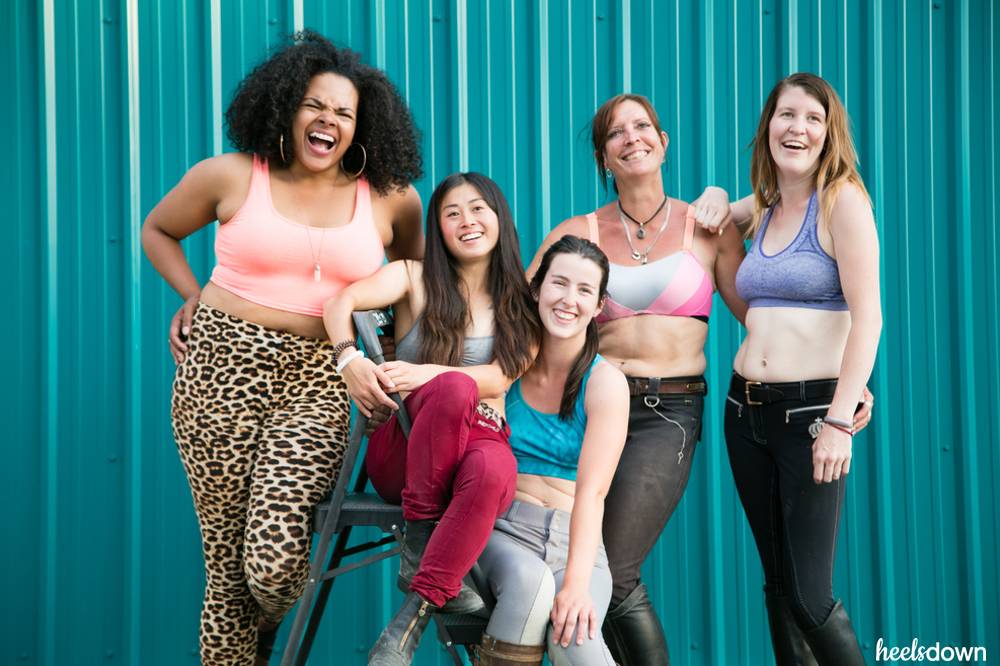Ever Wonder Why Breeches Don’t All Fit The Same?

By Katelyn Woodburn
When I was in fashion school, we were taught to draw our designs out on these templates of women that had totally unrealistic proportions. Like, no woman on Earth is 10 feet tall with legs going to her armpits and a 12-inch waist. I knew that I was indirectly contributing to a very unrealistic expectation of body size in our society.
It was a wake up call for me. I went to class one day and told the instructor I was going to make my own templates of size 8 women of average height, and she could fail me if she wanted to.
Being a designer and selling clothing has given me countless opportunities to chat with women about their body image and struggles with finding clothing they like. And while I feel lucky to be spoken to openly and confided in, it’s kind of harrowing how pervasive negative body image is. So I started offering custom sizing at Street and Saddle – my clothing company – because I wanted to show to women that it’s not them, it’s clothing not being designed for their unique shape. I definitely don’t consider S&S to be a pinnacle of size inclusivity (yet), but we are slowly and steadily working on it, which is sadly more than most brands are doing.
Yes, the process of creating an inclusive size range is a long-term financial and time investment. But there are smaller steps, such as hiring models in a broader range of sizes or adding a couple of sizes to a bestselling style, that are an easy first step in the right direction
Brands typically use a “sample size” human fit model and set of measurements for their designs. That person is typically a size 0-4. For clothing to be sized up properly up to say, a size 24, there needs to be adjustment to the fit, proportions and scaling. Same would be required for vice-versa. As you can imagine, companies do not want to devote the time and money to making a bunch of samples, finding a variety of fit models, and going through multiple rounds of changes before production. It’s easiest to just do a flat 0-12 size range and leave it at that. God forbid they just use a more median size (like 10 or 12) as a sample size so that it scales better in either direction.
There is also a vicious cycle I see occurring: plus-size women are (rightfully) very disenfranchised with buying clothing – either their size is not offered, or it’s badly designed for their shape. Brands “try” to offer extended sizes, and are disappointed when “those sizes didn’t sell” when they put no effort into developing a good fit or being more inclusive in their marketing.
Brands should be able to tell you the exact measurements of each size they have. I would suggest measuring the waist and hips on a pair of breeches that do fit, and emailing their customer service to compare to their measurements on hand. In the era of online shopping, this is a totally reasonable request.
While fitness is so important for riding, each person’s peak fitness is going to look totally different. Whatever shape you feel your best and healthiest in, you have a right to expect brands to make clothing to go with it. I know this is way easier said than done, but just know that you are definitely not alone.


